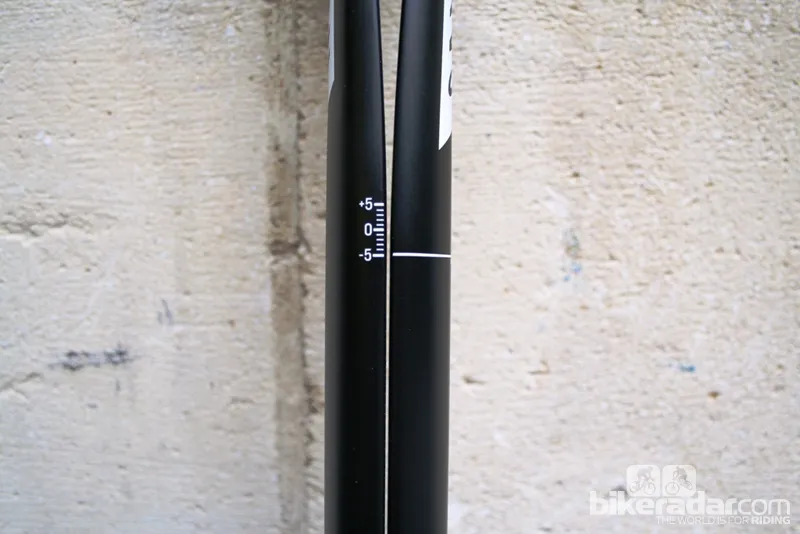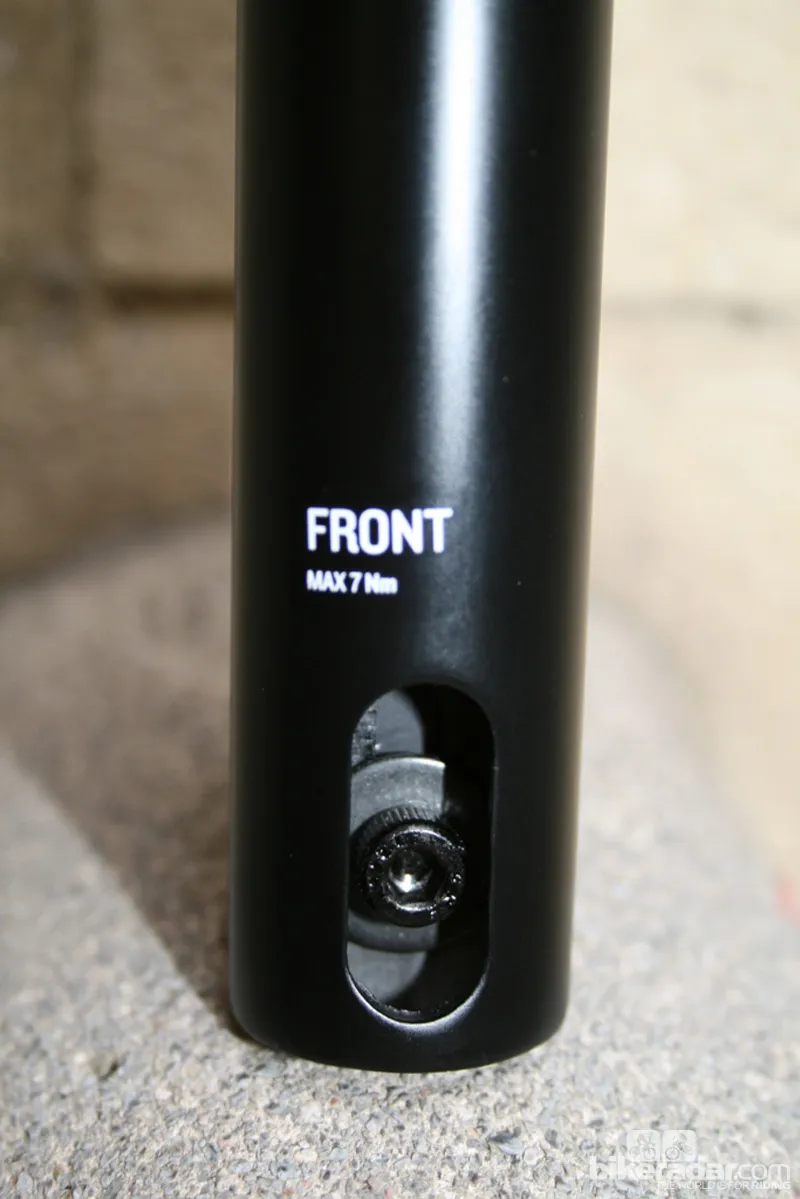Engineers at Canyon have been working on various VCLS (Vertical Comfort Lateral Stiffness) developments for a number of years now, which they’ve been incorporating into components and frames, and their latest has resulted in a production seatpost, the Post 2.0.
Canyon have done away with novel materials – version one of the VCLS seatpost contained vibration damping basalt fibres – and looked at design instead. We were impressed with the ingenuity of the Post 2.0 ancestor and prototype we first saw at Eurobike 2011, the VCLS Flat Spring Post and, outwardly at least, we're not looking at anything too different in the commercial model.
Canyon vcls seatpost tech
Video: Canyon talk about the design of their VCLS seatpost
In cross-section at the base are two carbon semi-circles connected with an adjustable bolt, which also allows for easy saddle tilt. There’s a handy guide halfway up the post to aid precise adjustment.
Towards the top, the independent shafts narrow away from each other and it’s that split construction that allows 20-25mm of flex, Michael Kaisen, head of research and development at Canyon, told BikeRadar. The saddle is clamped in with two easy-to-access bolts.
For now, at least, we’ll have to take Canyon’s word for it that torsion is minimal. At a claimed 220g (our scales didn’t concur – they said 234g) the 27.2mm diameter post is no lightweight, but it’s got a generous rider limit of 100kg (220lb).
There is some degree setback – a useful mechanism for vibration damping in its own right – through Canyon’s Flip Head clamping mechanism, but even at maximum that’s only 10mm. It’s a costly post, too – Canyon’s UK pricing changes according to fluctuations with the Euro, but the current guide price is £217.95.

Dialling in saddle tilt should be a doddle
Poor or broken roads detract from ride comfort – that’s a given. But vibration is also linked to faster times to fatigue, with bad surfaces making you tired more quickly, so combatting vibration has long been an area of keen competition for manufacturers.
Last year saw the debut of the Trek Domane – a frame-based solution used by the RadioShack-Trek team in the cobbled Classics. And, going back a number of years, Specialized developed their Zertz concept of elastomer inserts integrated into frames, forks and seatposts.
For more information on the VCLS Post 2.0, visit www.canyon.com.




